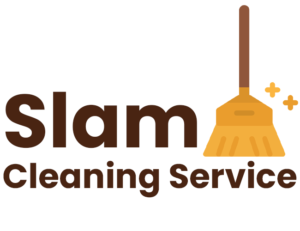Regular sump pump maintenance and cleaning are crucial to making sure it functions optimally when you need it the most. So, in this comprehensive guide by Neighborhood Plumbing, we’ll walk through how to keep a sump pump operating smoothly at any given moment. Whether you are an expert DIY enthusiast or new to home maintenance, this guide has been written to be straightforward and informative for everyone involved! This guide also helps you know when to hire a professional plumber in Cranberry Township.
Understanding Your Sump Pump
Before diving in and beginning our cleaning process, let’s briefly review all the components found within a typical sump pump:
Sump Pit or Basin: This pit or basin houses your sump pump and collects water entering through drains or natural groundwater flow into your basement.
Sump Pump: Your sump pump’s primary responsibility is removing water accumulated within its sump pit and redirecting it away from your home’s foundation.
Float Switch: A float switch is an integral component that activates a pump when water levels in a pit reach a certain threshold.
Discharge Pipe: This pipe safely directs water from your sump pump to an outside location for discharge.
Check Valves: Check Valves prevent water from returning into the sump pit when pump operations cease and are designed to stop flowing back upstream when turned off.
Backup Power Source: Many sump pumps feature an optional backup power source, such as a battery, to ensure they continue functioning during power outages.
Why it Is Important to Clean Your Sump Pump
Cleaning out your sump pump might not be on the top of your list of tasks, but it should be addressed too: It provides several important advantages.
Preventing Clogs: Dirt, debris, and sediment build-up in sump pits and pumps can obstruct their operation and require regular cleaning to remain unimpeded by these materials. Regular servicing ensures these issues will stay in the way.
Maintain Efficiency: An efficiently operating sump pump uses less energy, decreasing consumption and potentially prolonging its lifespan.
Avoid Malfunctions: Neglecting pump maintenance could result in costly pump breakdowns when needed, so regular cleaning will go a long way towards protecting against costly repairs.
Step-by-Step Guide to Clean Your Sump Pump
Before beginning any tasks, take precautionary steps by disconnecting the sump pump from its power source and unplugging it from any sources of potential electrical hazards.
Step One: Assemble Your Tools
This task does not require many tools; here is what is necessary:
- A bucket
- Gloves
- A flashlight
- A garden hose (with a nozzle)
- A scrub brush
- A screwdriver
Step Two: Remove Debris
Whisk out any debris accumulating in the sump pit using leaves, sticks, and any small items, such as stones that have settled at its surface, by scooping. Place this debris into your bucket.
Step 3: Disconnect Pump
Finding and disconnecting the sump pump is necessary to prevent accidents while cleaning it out.
Step 4: Extract Your Pump
Depending on your sump pump design, it may require removal from its pit. Please consult the manufacturer’s instructions, as this step typically involves disconnecting its check valve before gently lifting your sump.
Step 5: Clean Your Pump
With the sump pump removed, carefully inspect it for debris, such as dirt or mineral deposits, that might clog its impeller, hindering your sump pump’s performance. Make use of your scrub brush to thoroughly cleanse this part. Be especially vigilant of its impeller, which could become blocked over time and reduce performance significantly.
Step 6: Examine the Discharge Pipe
Attain a clear view into the discharge pipe using your flashlight to locate any obstructions or blockages in it, using a screwdriver or plumber’s snake as appropriate to clear away blockages you discover. If any blockages exist, take appropriate action, such as clearing them using either tool – for instance, using a screwdriver or plumber snake to dislodge any.
Step 7: Clean out the Sump Pit
Now, it is time to clean the sump pit itself. Utilizing your garden hose, flush away any remaining dirt or sediment at the bottom of the pit by directing it toward its center until everything has settled out and all settled material has been extracted from there. When finished, return the pump to its designated spot.
Step 8: Reconnect and Test
Reconnect your sump pump to its source and check its operation, including ensuring its float switch moves freely and that its on/off switch operates as intended.
Step 9: Test Backup Power Source
If your sump pump contains an emergency power backup source, test it regularly if power outages arise during stormy conditions. Doing this could save lives.
Step 10: Plan Regular Maintenance
Regular home maintenance should include servicing and inspecting your sump pump, depending on its conditions in your location and manufacturer recommendations. Clean it at least annually or as recommended.
Neighborhood Plumbing
At Neighborhood Plumbing, our skilled plumbers are at your service regarding sump pump maintenance and repairs. We understand the significance of having an efficiently operating sump pump in protecting against water damage. Whether that means cleaning, troubleshooting, professional advice, or professional guidance for sump pump troubleshooting services, we have you covered. We are dedicated to giving you peace of mind while protecting your home from water damage.

